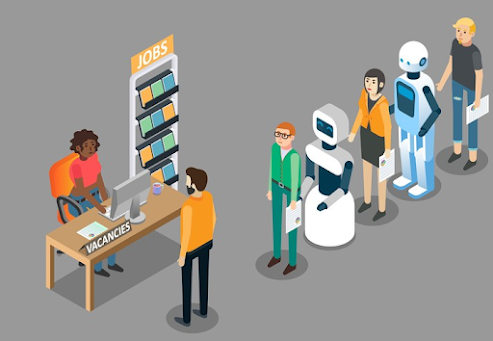Unleashing the Power of AI: Exploring the Impact on Employment and the Changing Workforce Landscape
In the era of rapid technological advancements, the integration of artificial intelligence (AI) has significantly transformed various industries. However, this transformative power has not come without consequences. The undeniable rise of AI in the workplace has raised concerns regarding the displacement of human workers, as evidenced by the recent exodus of over 4,000 highly skilled technology professionals in May 2023 alone. This article explores the profound implications of this phenomenon and its broader implications for the job market.
The Disruptive Force of AI:
The relentless march of AI technology has reached a pivotal juncture, as it has now demonstrated the ability to outperform humans in several specialized tasks. Automation, machine learning, and other AI-driven technologies have become increasingly proficient in complex decision-making, data analysis, and repetitive processes, resulting in their widespread implementation across diverse sectors. While this technological advancement brings immense benefits and opportunities, it also poses a tangible threat to the livelihoods of human workers.
The Plight of Technology Professionals:
According to recent reports, May 2023 witnessed a startling wave of job displacements, with over 4,000 highly skilled technology professionals falling victim to the burgeoning AI revolution. These individuals, with their extensive knowledge and expertise, found their roles usurped by advanced algorithms, intelligent systems, and autonomous machines. The affected workforce ranged from software developers and data analysts to system administrators and cybersecurity experts. This unprecedented loss of jobs has sent shockwaves through the technology industry, leaving professionals grappling with uncertainty and reshaping the employment landscape.
The Advantages of AI-Driven Automation:
Proponents argue that AI-driven automation offers numerous advantages, such as increased efficiency, enhanced productivity, and cost reduction. By automating routine tasks, organizations can allocate their human resources to more complex and strategic endeavors, ultimately driving innovation and growth. Furthermore, AI systems possess the ability to process vast amounts of data swiftly and accurately, enabling organizations to gain valuable insights and make informed decisions in real-time. Despite these benefits, the price paid in terms of human displacement should not be overlooked.
Adapting to the Changing Workforce Landscape:
As the impact of AI on employment becomes increasingly apparent, it is crucial for society to adapt and respond proactively to this paradigm shift. Governments, educational institutions, and corporations must collaborate to create comprehensive retraining programs aimed at equipping displaced workers with the necessary skills to thrive in an AI-driven economy. By prioritizing reskilling initiatives and fostering a culture of lifelong learning, we can help alleviate the socio-economic repercussions caused by job displacement, ensuring a smooth transition into the future of work.
Ethical Considerations and AI Regulation:
The rise of AI also raises important ethical considerations. As AI algorithms become more sophisticated, the need for transparency, accountability, and fairness becomes paramount. Society must ensure that AI systems are developed and deployed in accordance with ethical guidelines to prevent bias, discrimination, and the concentration of power. Additionally, policymakers must establish robust regulations to protect workers' rights and ensure a just distribution of the benefits derived from AI-driven automation.
The recent wave of job displacements in May 2023, affecting over 4,000 technology professionals, underscores the disruptive potential of AI in the workforce. While AI-driven automation brings undeniable benefits, such as increased efficiency and productivity, it also poses significant challenges to the labor market. Society must proactively respond to these changes by implementing retraining programs, fostering a culture of lifelong learning, and enacting robust ethical and regulatory frameworks. By doing so, we can navigate the evolving landscape and harness the full potential of AI while safeguarding the interests of workers and ensuring a prosperous future for all.
Collaboration Between Humans and AI:
While concerns about job displacement persist, it is essential to recognize the potential for collaboration between humans and AI. AI technology has the capacity to augment human capabilities, leading to new job opportunities and the emergence of hybrid roles that combine human creativity and critical thinking with AI-driven efficiency. Organizations must foster a symbiotic relationship between humans and AI, leveraging the strengths of both to drive innovation, productivity, and economic growth.
Investing in Future-Proof Skills:
To thrive in an AI-dominated job market, individuals must adapt their skill sets to remain relevant and resilient. Emphasizing skills that are uniquely human, such as creativity, complex problem-solving, emotional



Comments
Post a Comment